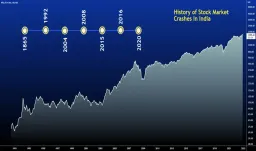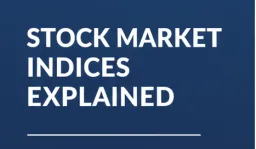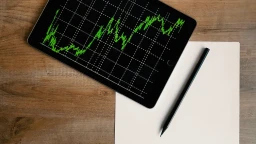What is the Shanghai Stock Exchange?

The Shanghai Stock Exchange (SSE) is one of the two stock exchanges operating independently in the People’s Republic of China, the other being the Shenzhen Stock Exchange. The SSE is based in the city of Shanghai, and it is by far the largest stock exchange in Mainland China in terms of market capitalization. In this article, we will take a look at the history of the SSE, its recent performance, requirements for listing and how it works.
What is the Shanghai Stock Exchange?
The Shanghai Stock Exchange is the largest stock exchange in China and one of the largest in the world. It was founded in 1891 and is headquartered in Shanghai. The SSE has a market capitalization of over US$4 trillion and trades over $2 trillion worth of shares each day.
The Shanghai Stock Exchange is open from Monday to Friday 9:30am to 4:00pm local time. To trade on the SSE, investors must have a trading account with a broker that is a member of the exchange. foreign investors can trade through one of the many international brokerages that are members of the SSE.
The SSE offers two main types of securities: stocks and bonds. Stocks are further divided into two categories: A-shares and B-shares. A-shares are denominated in Chinese yuan and can only be purchased by domestic investors. B-shares are denominated in U.S. dollars and can be purchased by both domestic and foreign investors.
The SSE also offers a variety of index products such as the SSE Composite Index, SSE 50 Index, SSE 180 Index, and SSE 380 Index. These indexes track the performance of different sectors.
History of Shanghai Stock Exchange
Shanghai Stock Exchange is one of the largest stock exchanges in the world, with a market capitalization of over $5 trillion. The exchange is located in the city of Shanghai, China.
The Shanghai Stock Exchange was founded in 1866, making it one of the oldest stock exchanges in the world. It was originally known as the Shanghai Exchange Association. In 1923, the exchange was renamed to its current name, the Shanghai Stock Exchange.
During the early 20th century, it was one of the most important financial centers in Asia. However, due to political turmoil in China during the 1950s and 1960s, the exchange fell into decline. It wasn’t until after China’s economic reform began in 1978 that the exchange began to regain its prominence.
Today, the Shanghai Stock Exchange is a leading global exchange, with over 1,500 listed companies and a daily trading volume of over $100 billion. The exchange is also home to China’s two largest companies by market capitalization: PetroChina and Industrial & Commercial Bank of China.
Structure of Shanghai Stock Exchange
The Shanghai Stock Exchange (SSE) is a stock exchange that is based in the city of Shanghai, China. It is one of the two stock exchanges operating independently in the People’s Republic of China, the other being the Shenzhen Stock Exchange. The SSE is also one of the largest stock exchanges in the world by market capitalization.
The SSE was established on November 26, 1990 and started operations on December 19, 1990. It has a long history, dating back to the early days of the Republic of China. The SSE was first known as the Shanghai Securities & Commodities Exchange, and it was later renamed to its current name in 2007.
The SSE is a non-profit organization that is owned by its members. There are two types of members: Class A members are allowed to trade securities and are typically large financial institutions; Class B members are allowed to trade only futures contracts.
The SSE has two main functions: to provide a fair, efficient, and transparent market for trading securities and to promote the sound development of China’s securities market. The SSE offers a wide range of products including stocks, bonds, futures, and options. It also provides services such as market
Performance of SSE

The SSE has seen a number of ups and downs in its history, but has generally been on an upward trend in recent years. In 2015, the SSE was the second-best performing stock exchange in the world (behind only the New York Stock Exchange), with a total return of nearly 60%. This was followed by another strong year in 2016, with a total return of over 30%.
However, 2017 was a difficult year for the SSE, as it was hit hard by the Chinese government’s crackdown on speculation and leverage. This led to a sharp decline in stock prices, with the SSE Composite Index falling over 20% from its peak.
As of September 2022, SSE is at 3115.60; Fallen -14.23% (516.73 points) compared to beginning of the year.
Listing Requirements for Shanghai Stock Exchange
In order to list on the Shanghai Stock Exchange, a company must first meet certain requirements. These include being registered and incorporated in China, having at least three years of financial statements, and meeting minimum standards for assets, net income, and shareholder equity. The Exchange also has strict listing rules regarding a company’s business activities, financial stability, and corporate governance.
How to invest in Shanghai Stock Exchange?
Anyone looking to invest in the Shanghai Stock Exchange will need to meet certain requirements. Here’s what you need to know about the process.
However, there are a few things you should know before investing. First, you’ll need to set up a brokerage account with a firm that offers trading on the Shanghai Stock Exchange. You’ll also need to be sure that you’re compliant with Chinese regulations.
Once you’ve set up your account and are compliant with regulations, you can start researching companies that you’re interested in investing in. When you’ve found a company that you want to invest in, you’ll need to place an order through your broker.
Just like any other stock exchange, the prices of stocks on the Shanghai Stock Exchange can fluctuate frequently. You’ll need to pay close attention to the market and make sure that you’re selling your shares at a good time.
Top components of SSE:
Following are some of the top components of SSE-
- Kweichow Moutai
- Industrial and Commercial Bank of China
- Agricultural Bank of China
- China Life
- Ping An Insurance
- China Merchants Bank
- PetroChina
- Bank of China
- Haitian Flavouring & Food
- Hengrui Medicine
Shanghai Stock Exchange vs Bombay Stock Exchange
When it comes to stock exchanges, there are a lot of different options out there. But two of the most popular choices are the Shanghai Stock Exchange and the Bombay Stock Exchange. So, which one is better? Let’s take a look at the history, performance, requirements and how each exchange works.
Shanghai Stock Exchange:
The Shanghai Stock Exchange is the largest stock exchange in Mainland China. It was founded in 1866 and is headquartered in Shanghai. The exchange has a market capitalization of over $5 trillion as of 2019. It is also the world’s 4th largest stock exchange by market capitalization.
The Shanghai Stock Exchange offers two types of trading platforms: the A-share market for stocks denominated in Chinese yuan and the B-share market for stocks denominated in foreign currencies. The A-share market is only open to domestic investors while the B-share market is open to both domestic and foreign investors.
The Shanghai Stock Exchange has a lot of strict requirements for listing. Companies must have a minimum of 3 years of profit history and must be profitable in the most recent year. They must also have a minimum float of 20%. In addition, companies must meet certain asset and shareholder equity requirements.
The Shanghai Stock Exchange is known for being volatile. In 2015, the exchange experienced a “flash crash” where the market fell by over 9% in just a few minutes.
Bombay Stock Exchange:
The Bombay Stock Exchange is the oldest stock exchange in Asia. It was founded in 1875 and is headquartered in Mumbai. The exchange has a market capitalization of over $2 trillion as of 2019. It is also the world’s 10th largest stock exchange by market capitalization.
The Bombay Stock Exchange offers two types of trading platforms: the Equity Delivery Platform for stocks denominated in Indian rupees and the Institutional Trading Platform for stocks denominated in foreign currencies. The Equity Delivery Platform is only open to domestic investors while the Institutional Trading Platform is open to both domestic and foreign investors.
The Bombay Stock Exchange has fairly lax listing requirements when compared to other exchanges. Companies must have a minimum float of 10% and must meet certain asset and shareholder equity requirements. In addition, companies must have a minimum of 3 years of profit history, although they are not required to be profitable in the most recent year.
Additionally, this year so far Bombay Stock Exchange is doing well compared to SSE. It is also more stable as compared to SSE.

Who should invest in Shanghai Stock Exchange
If you’re looking to diversify your portfolio and get in on the Chinese economy, then investing in the Shanghai Stock Exchange (SSE) is a great option. The SSE is the largest stock exchange in China and the fourth largest in the world. It’s home to over 1,500 listed companies with a market capitalization of over $6 trillion.
So, what are the requirements for investing in the SSE? First, you’ll need to open a brokerage account with a firm that offers access to the SSE. Once you have your account set up, you can begin buying and selling shares. It’s important to note that many brokers have minimum investment requirements, so be sure to check with your broker before making any trades.
When it comes to performance, the SSE has been on a tear lately. In 2017, the benchmark Shanghai Composite Index (SCI) surged more than 40%. And so far in 2022, the SSE is down by 14% from year beginning.
Conclusion
If you are considering investing in Chinese stocks, the SSE should definitely be on your radar. However, you mjst consider its volatality before investing as well.









